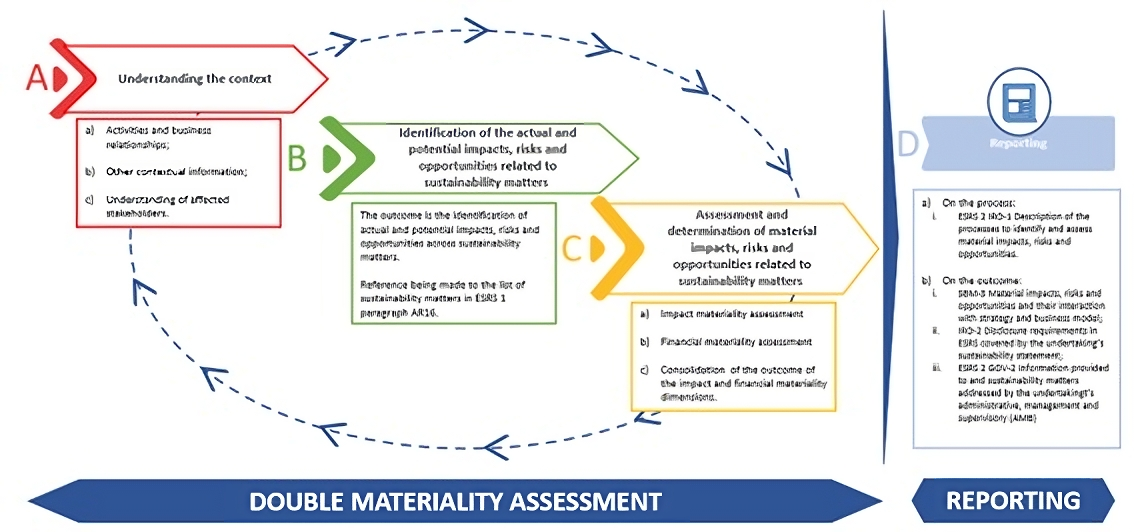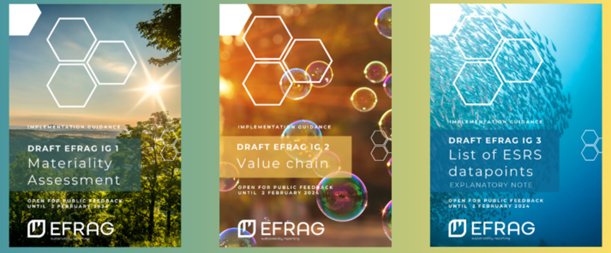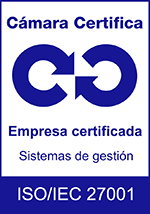EFRAG has published its first three ESRS Implementation Guidance documents reflecting the outcome of public feedback: EFRAG IG Materiality Assessment, EFRAG IG 2 Value Chain and EFRAG IG 3 ESRS Datapoints.
By prioritising these documents, EFRAG aims to support companies and other stakeholders in the implementation of NERS by helping them to focus on the aspects of the standards that are most relevant to them and by illustrating the information requirements with practical language and frequently asked questions.
Guía 1: Guía de aplicación de la evaluación de la materialidad (MAIG)
The first of these guides, known as MAIG, provides a detailed and illustrative process for assessing materiality in companies. This guide not only clarifies the concept of financial materiality, but also explores impact materiality, offering a more comprehensive understanding of how to identify and prioritise material aspects of sustainability.
MAIG is designed to help companies effectively identify, assess and disclose material sustainability-related impacts, risks and opportunities. It provides practical guidance on how organisations can structure their reporting to adequately reflect these critical elements, ensuring that stakeholders receive relevant and accurate information.
Key aspects of the Guide
The document is structured in five main chapters, each addressing different facets of the materiality assessment process:
- Introduction and Overview: This chapter sets the context by explaining the purpose and structure of the guidance, emphasising its non-binding nature but its role in supporting ESRS compliance. It also highlights the process followed by EFRAG in the development of this guide.
- The ESRS Approach to MaterialityThis section elaborates on the concept of dual materiality, which considers both impact materiality (the effects of a company’s activities on the environment and society) and financial materiality (the effects on the company’s financial performance). The guidance describes the criteria for determining the materiality of information, the scope of application and considerations for the entire value chain, including upstream and downstream impacts.
- Conducting the Materiality Assessment: Detailed steps for conducting a materiality assessment are provided, including:
- Step A: Understand the context.Step B: Identify actual and potential impacts, risks and opportunities related to sustainability issues.Step C: Assess and determine material IROs (impacts, risks and opportunities). Step D: Report on the findings. In addition, the role of stakeholder engagement is discussed, highlighting its importance in the materiality assessment process.
Example of a materiality assessment process:

Fuente:EFRAG IG1Evaluación de materialidad 2024
4. Leveraging Other Frameworks: This chapter explains how companies can use other standards and frameworks, such as the Global Reporting Initiative (GRI) Standards and the International Sustainability Standards Board (ISSB) Standards, to improve their materiality assessments. The guide also addresses the use of international due diligence instruments and other relevant frameworks.
5. Frequently Asked Questions (FAQs): A comprehensive FAQs section addresses common queries related to impact and financial materiality, the materiality assessment process, stakeholder engagement, aggregation/disaggregation and reporting. Specific FAQs provide clarity on issues such as the frequency of updating materiality assessments, consideration of time horizons and documentation of the assessment process.
Guideline 2: Value Chain Implementation Guide (VCIG)
The second guide, called VCIG, focuses on the company’s value chain. This guide describes everything from materiality assessment to policies and actions, and also covers the necessary metrics and targets.
VCIG illustrates how companies should define the reporting boundary for their sustainability reporting, including the concept of operational control in environmental standards. In doing so, it provides a roadmap for data collection and reporting along the value chain.
Guide 3: List of ESRS Datapoints
The third and final guide, entitled “List of ESRS Datapoints”, translates the full list of ESRS Set 1, which are the standards applicable to all industries, into detailed disclosure requirements. This guide presents these requirements in an Excel format, which makes them easy for companies to understand and apply.
At Laragon, we are committed to the effective implementation of ESRS to continue to pave the way towards more sustainable and ethical business practices.



